Pancit is one of the most comforting dishes in Filipino cooking. Whether it is Pancit Canton, Palabok, or Habhab, each version tells a story of family, celebration, and home. This roundup features 11 delicious pancit recipes that show how every plate of noodles brings people together through flavor, warmth, and tradition.
This post may contain affiliate links. Please read our disclosure policy.
A freshly cooked plate of Pancit always feels like home to me. The aroma of garlic sizzling in oil, the noodles soaking up that savory sauce, and the sound of laughter as everyone gathers around the table bring back so many memories.
What is Pancit
Pancit is a Filipino noodle dish with deep roots in Chinese influence. The word comes from pian i sit, which means “something cooked fast.” Through the years, Filipinos embraced and transformed it into something truly our own. From rice noodles to egg noodles, stir fried versions to soupy ones, pancit has become one of the most loved dishes in Filipino cooking.
It is more than just noodles. It is comfort food that carries the warmth of home. Each region has its own take on it, some with seafood, others with meat, and many with vegetables straight from the garden. Every version tells a different story, and yet they all share the same familiar heart.
The Heart of Pancit
Cooking pancit is simple, but there is a special rhythm to it. It usually starts with garlic and onion sizzling in oil, followed by slices of pork, chicken, or shrimp. Then the vegetables go in, cabbage, carrots, maybe some snow peas for crunch. Finally, the noodles soak up the sauce until every strand is packed with flavor. A quick squeeze of calamansi at the end ties everything together beautifully.
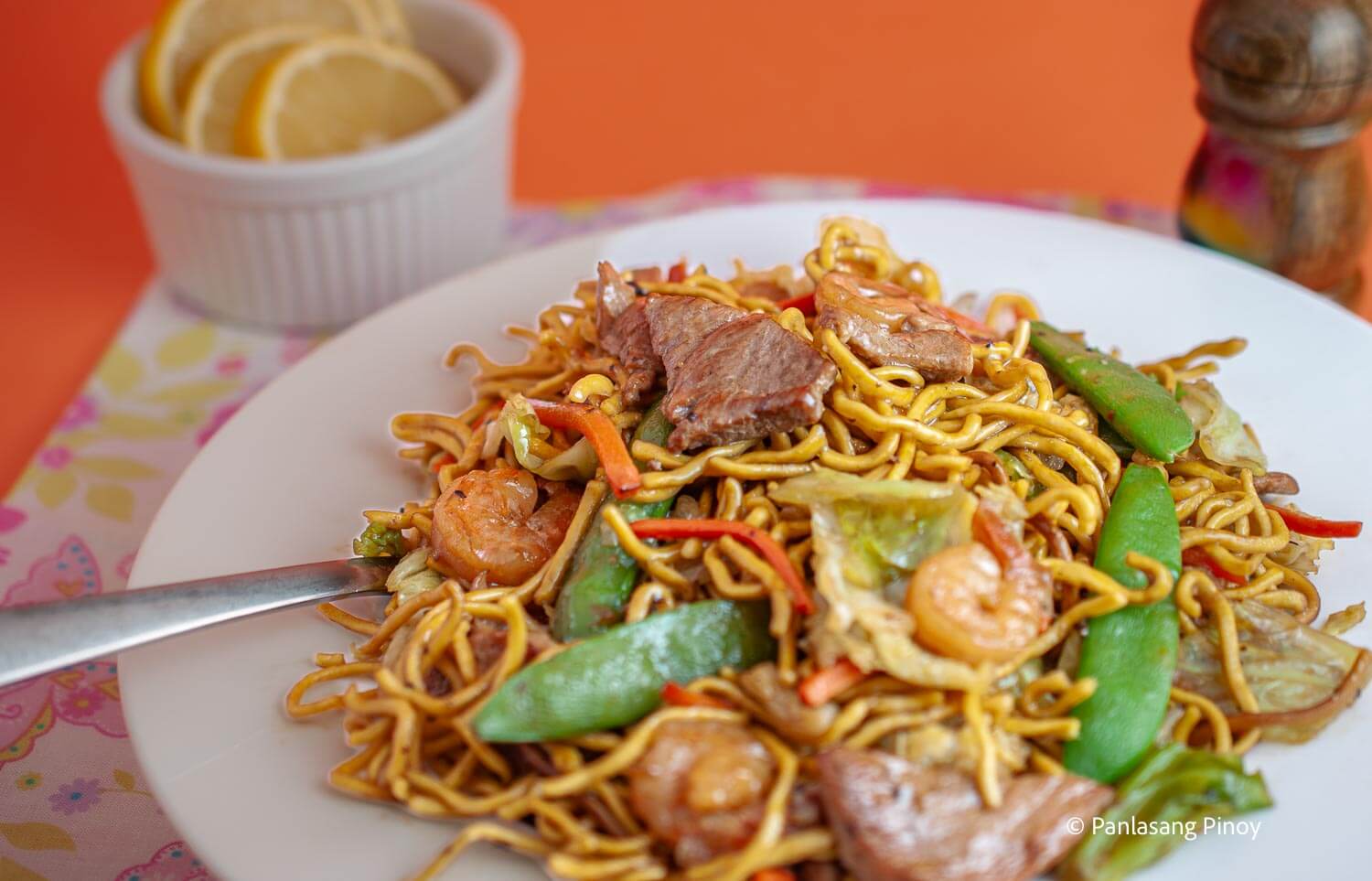
What I love about pancit is how forgiving it is. You can make it with whatever you have at home, and it will still come out delicious. It does not have strict rules, only your favorite ingredients and a bit of love.
Why Filipinos Love Pancit
In Filipino gatherings, pancit is a must have dish. You will always find it at birthdays because the long noodles symbolize long life. But even on ordinary days, it is a dish that brings comfort after a long day at work or something to share with friends when they visit.
Pancit reminds us of togetherness. It is one of those dishes that always makes people stop and sit down to eat, talk, and laugh. Whether you are in Manila or abroad, cooking pancit always feels like bringing a piece of the Philippines to your kitchen.
11 Pancit Recipes to Try
If you want to explore different versions of this Filipino favorite, here are 11 pancit recipes that show just how special our noodle dishes can be. Each one has its own personality, some are saucy and rich while others are light and simple.

Crispy Fried Noodles
This version features deep fried noodles that are crisped first then topped with sautéed garlic, chicken slices, shrimp, and vegetables for a delightful contrast of textures. It is perfect for gatherings because the crunchy noodle base stays crisp before soaking in the sauce. The recipe shows how simple noodles, when handled right, can turn into a memorable dish.

Sotanghon Guisado
This dish uses vermicelli glass noodles that are soaked and then sautéed with garlic, onions, meat, and vegetables for a light and flavorful result. It is a comforting noodle dish that feels homey enough for weekdays yet special enough for celebrations. The noodles absorb the savory broth beautifully, making every bite delicate and satisfying.
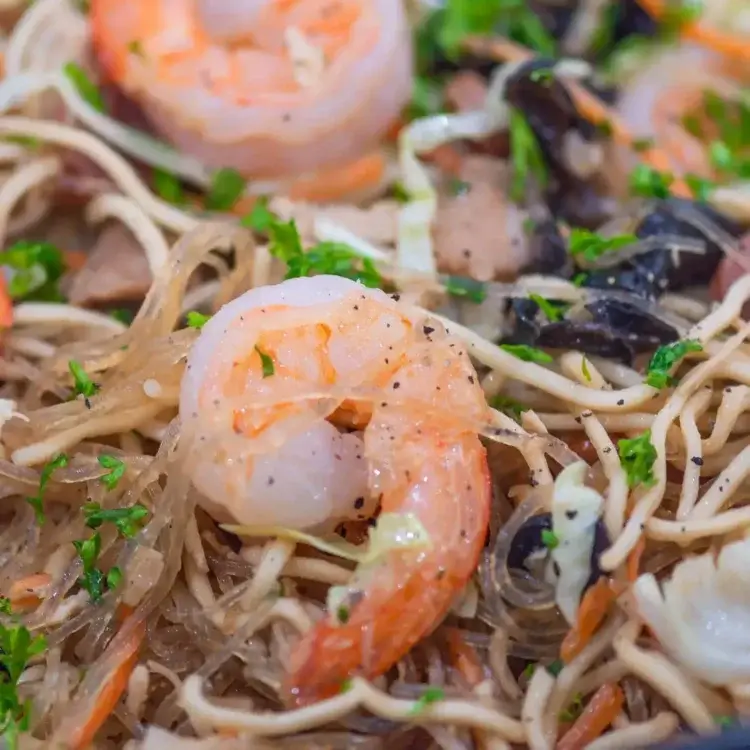
Bam I
This Cebuano style noodle dish combines two types of noodles and a mix of meats to create a hearty and rustic meal. It captures the regional creativity of Cebu, where local cooks blend Chinese and Filipino influences seamlessly. The combination of textures and flavors makes it a true comfort dish.
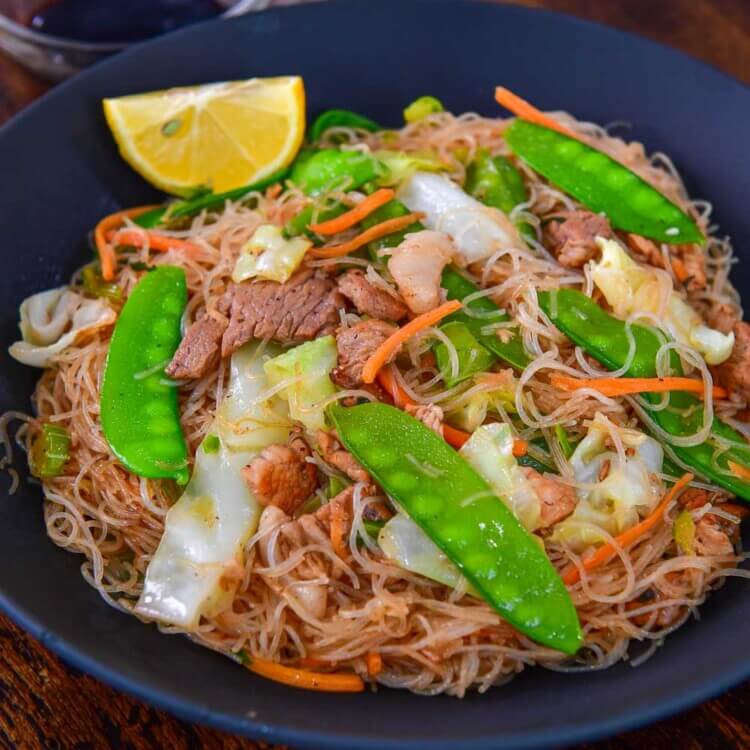
Pancit Guisado
A classic rice noodle version featuring bihon stir fried with chicken, shrimp, and vegetables in a savory soy based sauce. It is one of the most familiar and comforting types of pancit you will find across Filipino homes. This simple yet flavorful dish proves that pancit does not need fancy ingredients to taste amazing.
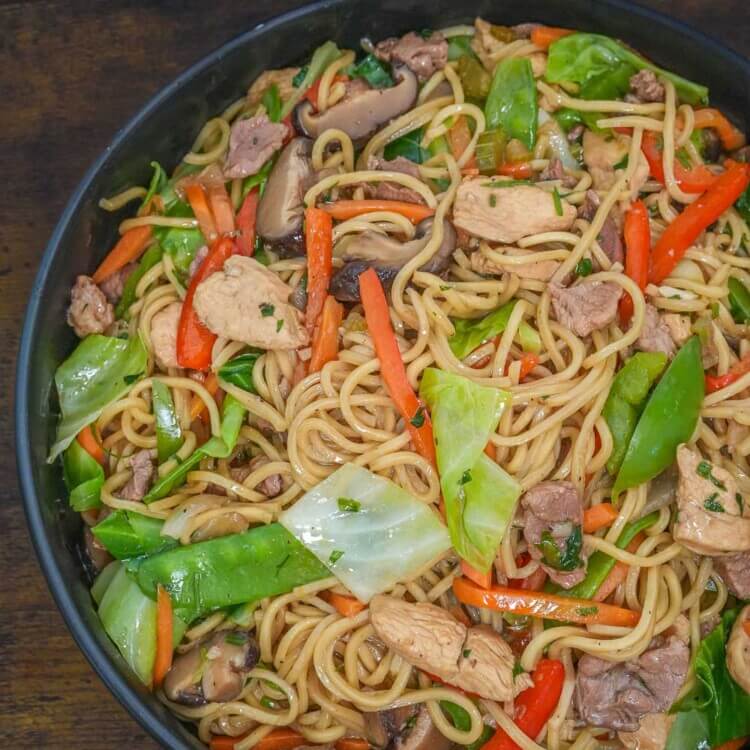
Pancit Canton
This recipe uses flour stick noodles combined with pork, shrimp, Chinese sausage, and soy oyster seasoning for that rich, meaty taste everyone loves. It is one of the most popular pancit varieties, known for its bold flavors and satisfying bite. The mix of vegetables and proteins gives this version a wonderful balance of color and texture.
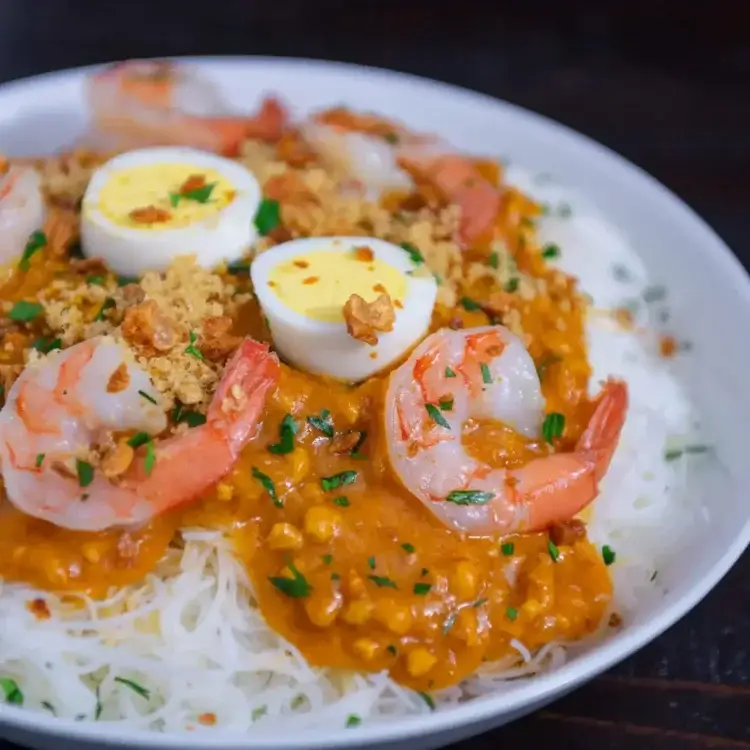
Pancit Palabok
This dish features noodles coated in a golden shrimp sauce and topped with crushed chicharon, hard boiled eggs, and smoked fish flakes. It is colorful, festive, and often served during special occasions and family gatherings. The combination of textures and flavors makes it one of the most iconic Filipino noodle dishes.
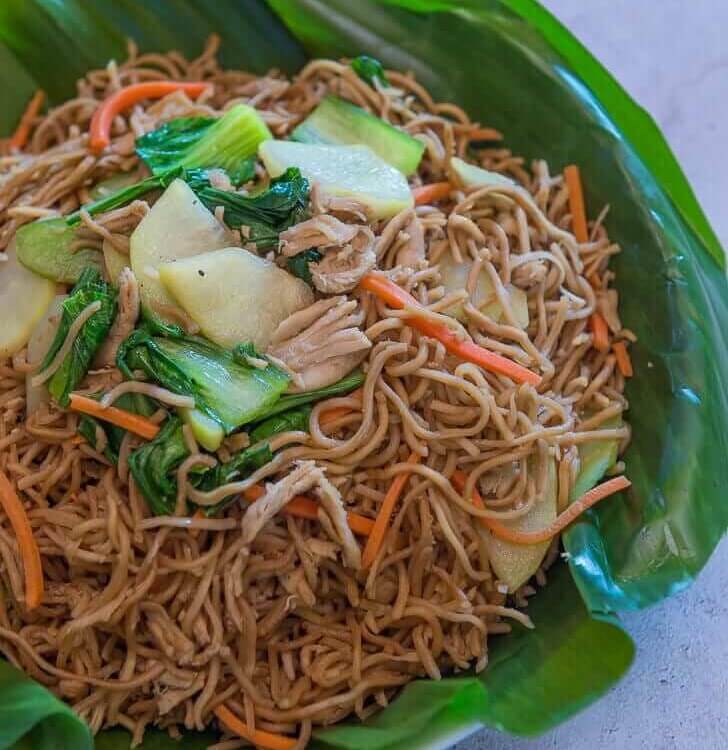
Pancit Habhab
Originating from Lucban, this dish uses miki Lucban noodles served on banana leaves and eaten without utensils for a fun and rustic experience. It combines pork, liver, shrimp, and vegetables for a flavorful and smoky taste. Pancit Habhab is proof that good food does not need to be fancy to be unforgettable.
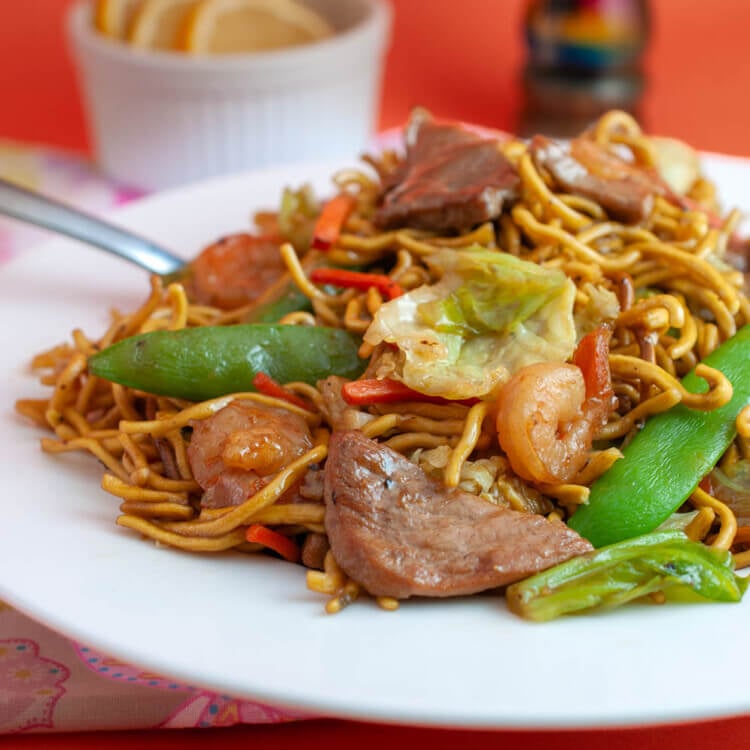
Pancit Bato
From Bicol’s town of Bato, this local favorite uses toasted noodles stir fried with pork, shrimp, chicken broth, and vegetables. It has a bold, savory flavor that reflects the region’s love for hearty, home cooked food. Including it in your pancit lineup shows how diverse Filipino noodles can be from one province to another.
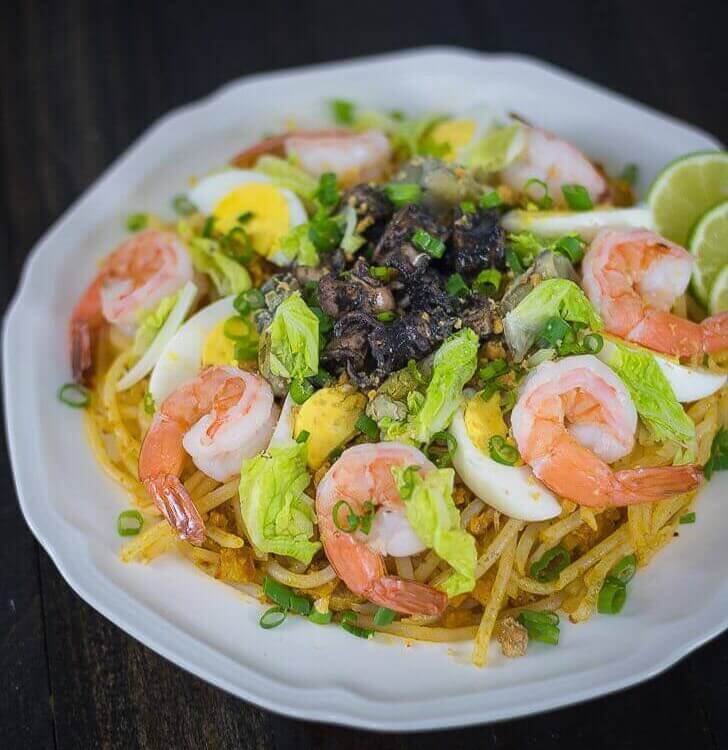
Pancit Malabon
A rich seafood laden noodle dish from Malabon featuring thick rice noodles in an orange colored sauce made with shrimp broth and crab fat. It is generously topped with shrimp, squid, pork rinds, and smoked fish flakes for extra flavor. This vibrant and saucy dish always stands out in celebrations and fiestas.

Pancit Chami
This version from Quezon province features fresh noodles cooked with pork, chicken, liver, and a sweet savory sauce made from soy sauce, oyster sauce, and sugar. It is thick, flavorful, and slightly saucy, offering something different from the usual pancit dishes. It is a great way to experience another regional style of Filipino noodles.
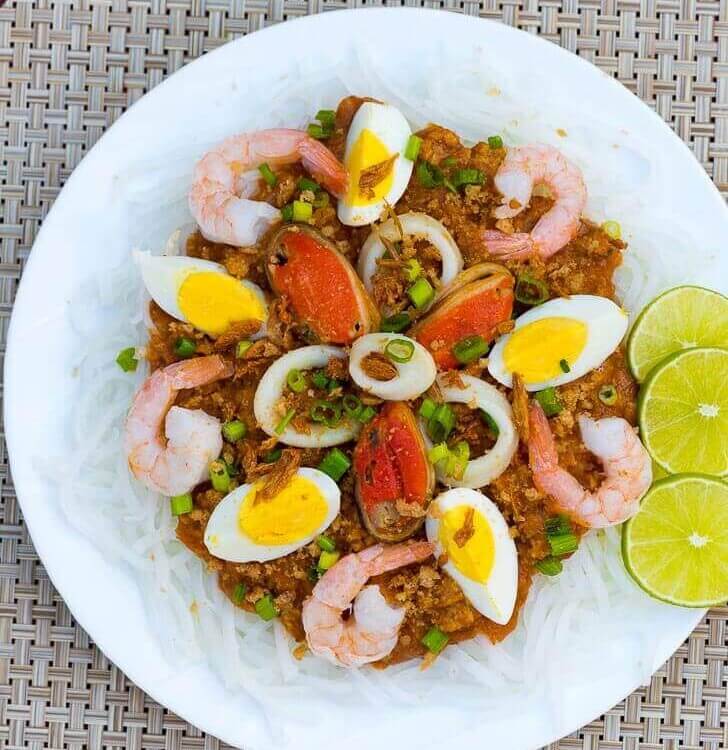
Pancit Luglug
This Pampanga favorite is similar to palabok but uses thicker rice noodles and a rich shrimp and pork sauce. It is flavorful, creamy, and always topped with egg, shrimp, and crushed chicharon for that perfect mix of texture. This dish beautifully represents the Kapampangan love for bold and hearty flavors.
These recipes show just how diverse Filipino noodles can be. Each one has its own character, but they all celebrate the same idea, food that brings people closer.
Tips in Cooking Pancit
- Prepare all ingredients before you start cooking. Pancit cooks fast once you begin.
- Use high heat so the noodles absorb flavor without turning soggy.
- Sauté the garlic and onion until fragrant before adding meat and vegetables.
- Adjust seasonings toward the end to get the perfect balance of saltiness and umami.
- Do not forget to finish with calamansi or lemon juice for that bright, fresh flavor.
How Pancit Brings People Together
Every Filipino family has their own pancit memories. It could be a birthday meal with long noodles for long life, or a quick merienda shared after a long day. Pancit has a way of turning simple moments into something meaningful.
I still find comfort in cooking pancit. The smell alone brings me back to my childhood in the Philippines, the laughter, the stories, and the joy of eating together. That is what makes it timeless.
Pancit is a reflection of who we are. It is simple, humble, and full of warmth, the kind of food that reminds you of family, friends, and home.
Try these 11 pancit recipes and discover which one becomes your favorite. Each dish has its own charm, but they all share that familiar taste of comfort and togetherness.
